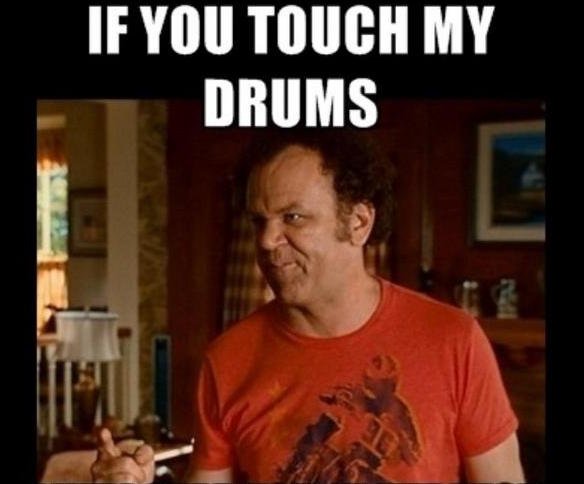I have a great friend, Gene Micofsky, who just moved to Memphis from L.A. in the last couple of years. We’ve been playing gigs together. He’s a great guitarist, singer and songwriter. He’s also very helpful when we are loading out at the end of the night. He knows I have arthritis in both my ankles and move kinda slow when the gig is over. Several times I’ve asked him to stop packing up my drums because I have a certain way of packing them up. He asked once, “what is it with you and drummers and your drum sets?” I know there is a great percentage of us who are very particular not only about how we set up our kits, but also how we break them down and pack them up at the end of the gig. So, Gene, if you are reading this, here is my “drummer logic” about how and why I prefer to pack the drums up myself.
The main reasons why are:
-My process is quick and logical.
-I don’t move the drums elsewhere on stage, I pull them straight up off the kit and pack them straight down into the cases. Nothing needs to be moved. If you move them, you are causing more steps and more work for me.
-When I pack them in my order by myself, I know nothing will get broken, misplaced, lost or packed in the wrong case.
-This is why my years old drum sets look brand spanking new. I handle them with over abundant care.
So, my particular order is
1. While still sitting on the throne after the last song, I pack cymbals straight into the cymbal bag which is always sitting behind me, since it is also my stick bag.
2. Still sitting, I pack electronics, cords, bass drum pedal, hoop mounted cowbell, chart book, tool bag, gaff tape and other misc. knick knacks into three small cases which sit to my left all night. Last thing to go in is the seat top.
3. Then I go get the drum cases and hardware bag from where ever they are stored and place them, opened, in a circle in front of the drum set.
4. Standing in front of the drum set, I pull the mounted toms, floor tom, and snare drum and place them straight down into their cases.
5. I grab the stands and mounts, collapse them and place them directly into the hardware bag or case. At that point, all that is left is the bass drum, carpet, and the floor fan. I fold the spurs, then pack the bass drum into its case and fold up the carpet.
6. I do a quick dummy check, close up the cases and start loading them out to the car. THAT’S when I could use some help.
I know this seems rather OCD/anal retentive and trivial, but it does make it easier to set the drums up on the next gig because the order is just reversed; Carpet, bass drum, stands, toms and snare, throne top, electronics and other small stuff, then lastly, cymbals. Also, sometimes things get broken or threads get stripped when a non drummer is trying to help. Or drums will be packed in the case wrong, wing nuts get loosened that don’t need to be loosened, or overtightened that don’t need over tightening, or the bass drum may get moved without detaching the bass drum pedal, etc.
Every drummer has their idiosyncrasies about their kit. In fact, just because you know how to pack up one drummer’s drums doesn’t mean it’s going to work the same for another drummer’s kit. Then again, some drummers are not that picky about it. “ Just thrown them in the car”. We nit-picky drummers appreciate the offer to help, folks, but just wait ‘til we have it all packed up in the cases. That’s when the heavy lifting starts.

